Last week, we shared the first half of our Q&A with Raspberry Pi Trading CEO and Raspberry Pi creator Eben Upton. Today we follow up with all your other questions, including your expectations for a Raspberry Pi 4, Eben’s dream add-ons, and whether we really could go smaller than the Zero.
Live Q&A with Eben Upton, creator of the Raspberry Pi
Get your questions to us now using #AskRaspberryPi on Twitter
- Werbung -- Werbung -
With internet security becoming more necessary, will there be automated versions of VPN on an SD card?
There are already third-party tools which turn your Raspberry Pi into a VPN endpoint. Would we do it ourselves? Like the power button, it’s one of those cases where there are a million things we could do and so it’s more efficient to let the community get on with it.
Just to give a counterexample, while we don’t generally invest in optimising for particular use cases, we did invest a bunch of money into optimising Kodi to run well on Raspberry Pi, because we found that very large numbers of people were using it. So, if we find that we get half a million people a year using a Raspberry Pi as a VPN endpoint, then we’ll probably invest money into optimising it and feature it on the website as we’ve done with Kodi. But I don’t think we’re there today.
Have you ever seen any Pis running and doing important jobs in the wild, and if so, how does it feel?
It’s amazing how often you see them driving displays, for example in radio and TV studios. Of course, it feels great. There’s something wonderful about the geographic spread as well. The Raspberry Pi desktop is quite distinctive, both in its previous incarnation with the grey background and logo, and the current one where we have Greg Annandale’s road picture.
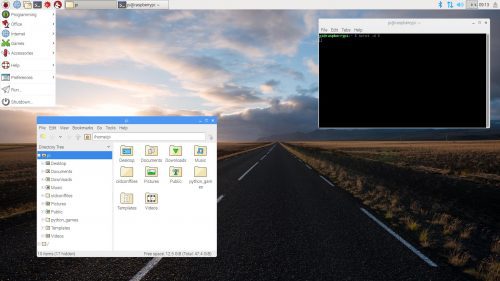
And so it’s funny when you see it in places. Somebody sent me a video of them teaching in a classroom in rural Pakistan and in the background was Greg’s picture.
Raspberry Pi 4!?!
There will be a Raspberry Pi 4, obviously. We get asked about it a lot. I’m sticking to the guidance that I gave people that they shouldn’t expect to see a Raspberry Pi 4 this year. To some extent, the opportunity to do the 3B+ was a surprise: we were surprised that we’ve been able to get 200MHz more clock speed, triple the wireless and wired throughput, and better thermals, and still stick to the $35 price point.
We’re up against the wall from a silicon perspective; we’re at the end of what you can do with the 40nm process. It’s not that you couldn’t clock the processor faster, or put a larger processor which can execute more instructions per clock in there, it’s simply about the energy consumption and the fact that you can’t dissipate the heat. So we’ve got to go to a smaller process node and that’s an order of magnitude more challenging from an engineering perspective. There’s more effort, more risk, more cost, and all of those things are challenging.
With 3B+ out of the way, we’re going to start looking at this now. For the first six months or so we’re going to be figuring out exactly what people want from a Raspberry Pi 4. We’re listening to people’s comments about what they’d like to see in a new Raspberry Pi, and I’m hoping by early autumn we should have an idea of what we want to put in it and a strategy for how we might achieve that.
Could you go smaller than the Zero?
The challenge with Zero as that we’re periphery-limited. If you run your hand around the unit, there is no edge of that board that doesn’t have something there. So the question is: “If you want to go smaller than Zero, what feature are you willing to throw out?”
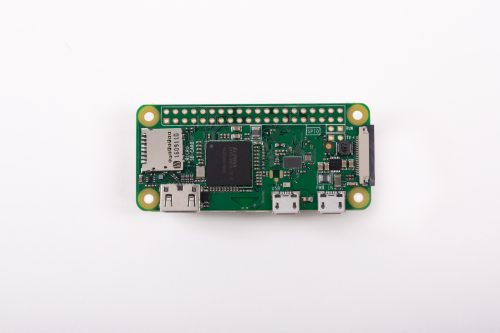
It’s a single-sided board, so you could certainly halve the PCB area if you fold the circuitry and use both sides, though you’d have to lose something. You could give up some GPIO and go back to 26 pins like the first Raspberry Pi. You could give up the camera connector, you could go to micro HDMI from mini HDMI. You could remove the SD card and just do USB boot. I’m inventing a product live on air! But really, you could get down to two thirds and lose a bunch of GPIO – it’s hard to imagine you could get to half the size.
What’s the one feature that you wish you could outfit on the Raspberry Pi that isn’t cost effective at this time? Your dream feature.
Well, more memory. There are obviously technical reasons why we don’t have more memory on there, but there are also market reasons. People ask “why doesn’t the Raspberry Pi have more memory?”, and my response is typically “go and Google ‘DRAM price’”. We’re used to the price of memory going down. And currently, we’re going through a phase where this has turned around and memory is getting more expensive again.
Machine learning would be interesting. There are machine learning accelerators which would be interesting to put on a piece of hardware. But again, they are not going to be used by everyone, so according to our method of pricing what we might add to a board, machine learning gets treated like a $50 chip. But that would be lovely to do.
Which citizen science projects using the Pi have most caught your attention?
I like the wildlife camera projects. We live out in the countryside in a little village, and we’re conscious of being surrounded by nature but we don’t see a lot of it on a day-to-day basis. So I like the nature cam projects, though, to my everlasting shame, I haven’t set one up yet. There’s a range of them, from very professional products to people taking a Raspberry Pi and a camera and putting them in a plastic box. So those are good fun.
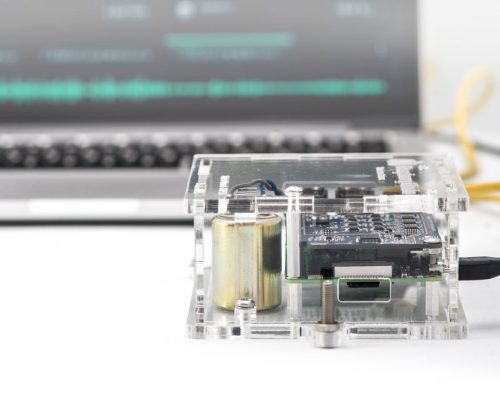
The Raspberry Shake seismometer
And there’s Meteor Pi from the Cambridge Science Centre, that’s a lot of fun. And the seismometer Raspberry Shake – that sort of thing is really nice. We missed the recent South Wales earthquake; perhaps we should set one up at our Californian office.
How does it feel to go to bed every day knowing you’ve changed the world for the better in such a massive way?
What feels really good is that when we started this in 2006 nobody else was talking about it, but now we’re part of a very broad movement.
We were in a really bad way: we’d seen a collapse in the number of applicants applying to study Computer Science at Cambridge and elsewhere. In our view, this reflected a move away from seeing technology as ‘a thing you do’ to seeing it as a ‘thing that you have done to you’. It is problematic from the point of view of the economy, industry, and academia, but most importantly it damages the life prospects of individual children, particularly those from disadvantaged backgrounds. The great thing about STEM subjects is that you can’t fake being good at them. There are a lot of industries where your Dad can get you a job based on who he knows and then you can kind of muddle along. But if your dad gets you a job building bridges and you suck at it, after the first or second bridge falls down, then you probably aren’t going to be building bridges anymore. So access to STEM education can be a great driver of social mobility.
By the time we were launching the Raspberry Pi in 2012, there was this wonderful movement going on. Code Club, for example, and CoderDojo came along. Lots of different ways of trying to solve the same problem. What feels really, really good is that we’ve been able to do this as part of an enormous community. And some parts of that community became part of the Raspberry Pi Foundation – we merged with Code Club, we merged with CoderDojo, and we continue to work alongside a lot of these other organisations. So in the two seconds it takes me to fall asleep after my face hits the pillow, that’s what I think about.
We’re currently advertising a Programme Manager role in New Delhi, India. Did you ever think that Raspberry Pi would be advertising a role like this when you were bringing together the Foundation?
No, I didn’t.
But if you told me we were going to be hiring somewhere, India probably would have been top of my list because there’s a massive IT industry in India. When we think about our interaction with emerging markets, India, in a lot of ways, is the poster child for how we would like it to work. There have already been some wonderful deployments of Raspberry Pi, for example in Kerala, without our direct involvement. And we think we’ve got something that’s useful for the Indian market. We have a product, we have clubs, we have teacher training. And we have a body of experience in how to teach people, so we have a physical commercial product as well as a charitable offering that we think are a good fit.
It’s going to be massive.
What is your favourite BBC type-in listing?
There was a game called Codename: Druid. There is a famous game called Codename: Droid which was the sequel to Stryker’s Run, which was an awesome, awesome game. And there was a type-in game called Codename: Druid, which was at the bottom end of what you would consider a commercial game.
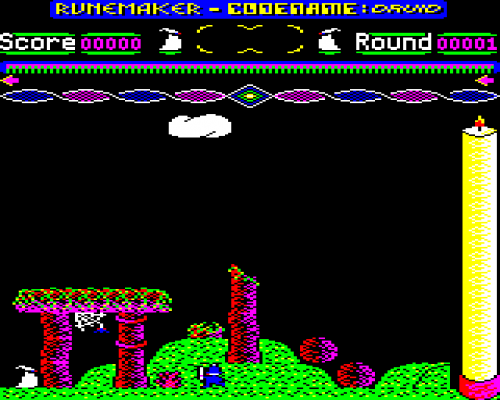
And I remember typing that in. And what was really cool about it was that the next month, the guy who wrote it did another article that talks about the memory map and which operating system functions used which bits of memory. So if you weren’t going to do disc access, which bits of memory could you trample on and know the operating system would survive.
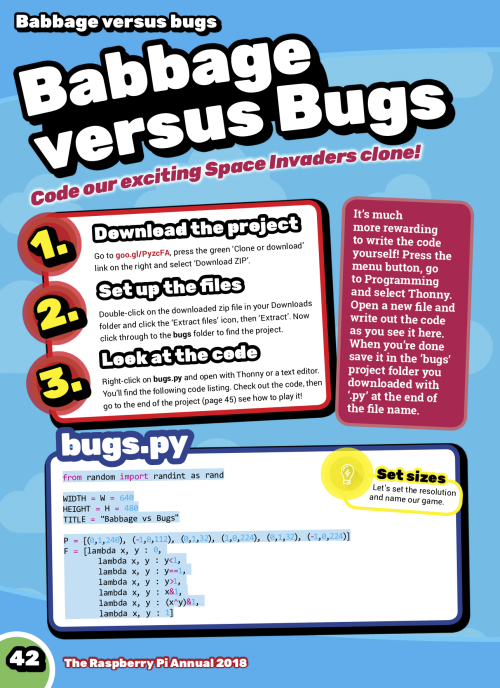
See the full listing for Babbage versus Bugs in the Raspberry Pi 2018 Annual
I still like type-in listings. The Raspberry Pi 2018 Annual has a type-in listing that I wrote for a Babbage versus Bugs game. I will say that’s not the last type-in listing you will see from me in the next twelve months. And if you download the PDF, you could probably copy and paste it into your favourite text editor to save yourself some time.
Website: LINK
